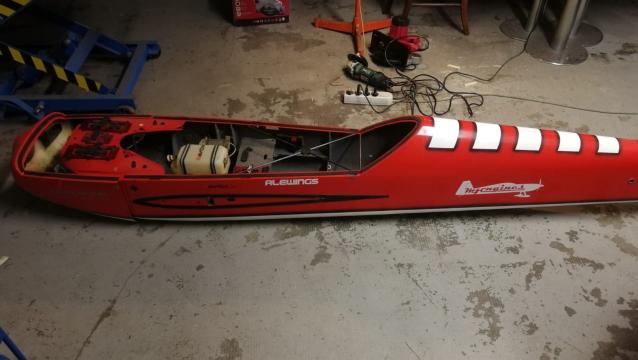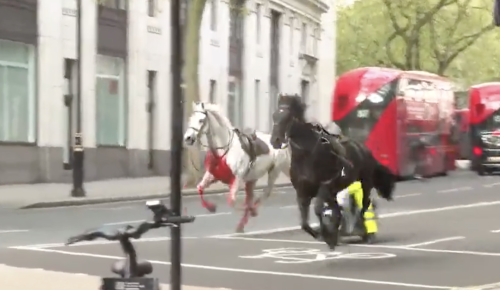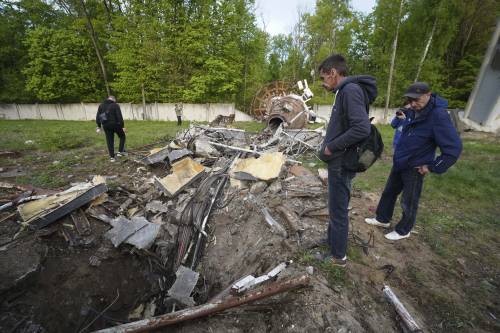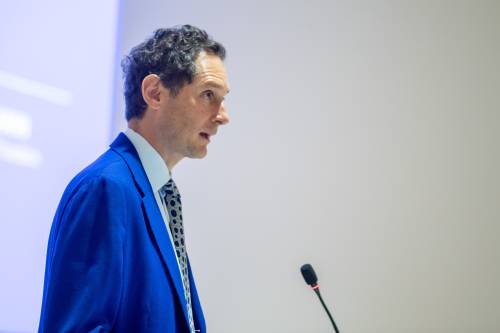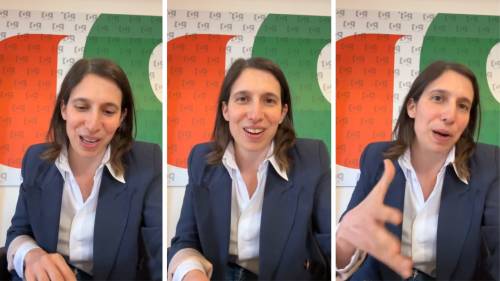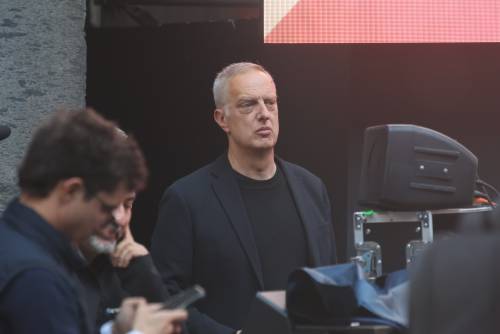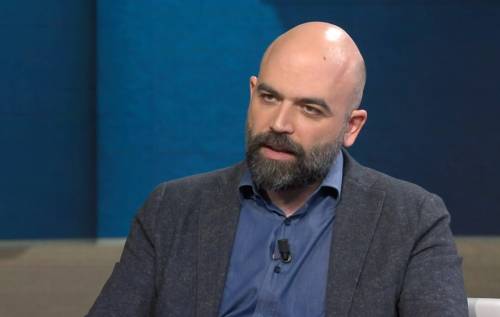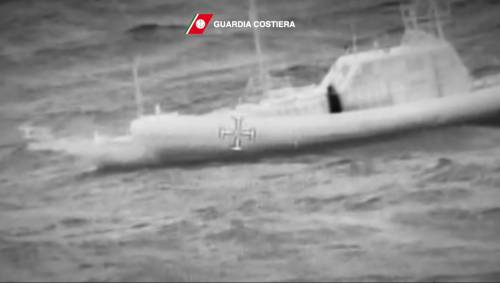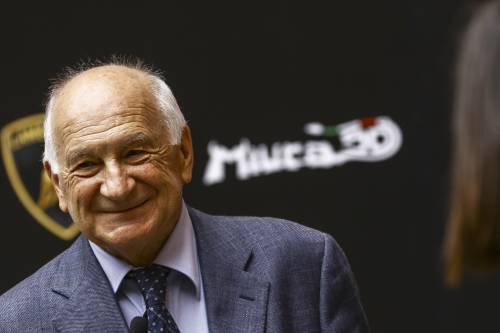Giampaolo Talani was born in San Vincenzo (LI). After attending Art School in Lucca and in Florence he went to the Academy of Fine Arts in Florence where he met Goffredo Trovarelli as his teacher. Throughout his studies he experimented with all art classical techniques but finally he chose painting, he also devoted himself to the fresco technique in which he is one of the greatest contemporary experts.
In his youth he painted the great cycle of fresco paintings in the church of San Vincenzo, and that was followed by other works: the "Preaching of San Bernardino" in the Episcopal Palace of Massa Marittima, the Sanctuary of Our Lady of Frassine.
Talani has later succeded also in creating works in bronze in which ones he displaces his widely explored three-dimensional figurative icons: the sailor, the departing man, the man who travels the sea, the fish finder.
In his curriculum since the early '80s - '90s some important solo exhibitons have appeared in selected art galleries, both in Italy and abroad and significant exhibitions, often anthological exhibitions, took place in public places.
However, beyond private clients and his personal artistic and poetic research, we want to emphasize the great impetus which Talani has given to the so called "Public Art" through the creation of works of undisputed and shared emotional impact, works placed in direct contact with people in public spaces of large attendance.
He started with the panels, painted for the interior staircase of the Municipality in San Vincenzo, presented in 2002 by Vittorio Sgarbi, and he got to "DEPARTURES", the fresco which in 2006 was located in the railway station "Santa Maria Novella" in Florence, a work that perfectly fits into Michelucci's great rationalist architecture.
The fresco is being acquired by the city of Florence, which in 2008 hosted his major retrospective in Palazzo Vecchio "Rosa dei Venti". At the same time a 3 mt. high bronze statue, bearing the same name, was placed under the Loggia of the Uffizi.
He was the creator and protagonist for RAI RETE 1 of the television romance broadcast "Rosa dei Venti - The Island that there is", aired in December 2009 and deliberately inserted after the news TG1, so that it could balance a poetic and cultural moment against the often brutal reality of the news.
Taking up the title of the successful RAI transmission, the public exhibition, held in 2010 in the picturesque setting of the square next to the cathedral in Pietrasanta, was named "The island that there is"; it aroused a strong fascination thanks to the exhibition of paintings and sculptures never seen before, recreating the distinctive poetic world of the Tuscan master. Still within in the institutional sphere there's the painting "THE HERO'S SHADOW", dedicated to the figure of Giuseppe Garibaldi.
For this work dedicated to the Hero of Two Worlds, the master Talani was received by the President Giorgio Napolitano, who wanted to place the artist 's work in the Pinacoteca of Quirinale, while the work that recalls the great Italian Risorgimento, entitled "THOUSAND MEN" is exhibited in the Museum of the Risorgimento in the "Victorian" in Rome.
On the occasion of the celebrations for the 150th anniversary of the Unification of Italy, on commission of the organizing Committee Talani produced GIUSEPPE GARIBALDI's bust in two copies, one of which is placed in the Quirinale and the other in the Senate at Palazzo Madama.
This vocation to the "public" of the artist's works is not limited to Italy. Talani was in fact the only foreign artist to be invited by the Berlin Parliament to open the celebrations of the twentieth anniversary of the fall of the Wall with the installation of "DIE MAUER-UMBRELLAS OF FREEDOM".
Among the other "public" works we remember the 7 mt. high bronze sculpture "The Sailor", dated 2010, located at the entrance of the tourist harbor of San Vincenzo.
A 20 meters high replica of the same sailor is being planned for the port in Miami Fla., in order to commemorate the great Florentine navigator Amerigo Vespucci.
The railway station in Venice "Saint Lucia" will welcome on its premises the 3 mt. high bronze statue "Rosa dei Venti" as a symbol of the Venetian port, while another project dedicated to Giglio Island is being studied.
Master Talani 's works can be found in both public and private prestigious collections. For some time now Talani has being collaborated with selected Italian and foreign galleries.
About him it has been written by, among others, Mario Bucci, Tommaso Paloscia, Nicola Micieli, Domenico Guzzi, Giovanni Faccenda, Vittorio Sgarbi, Maurizio Fagiolo dell'Arco, Maurizia Tazartes, Maria Cristina Acidini, Elisa Gradi, Sandra Nava, Umberto Cecchi, Luigi Ravaioli, Maurizio Vanni, Marco Moretti, Pier Francesco Listri, Fabio Canessa, Francesco Festuccia, Riccardo Ferrucci, Laura Farina, Silvano Granchi.
Among its major holdings should be mentioned the one at the 54 th International Art Exhibition of the Venice Biennale.
Giampaolo Talani è nato a San Vincenzo (LI) nel 1955. Dopo il Liceo Artistico a Lucca e a Firenze, frequenta l'Accademia di Belle Arti di Firenze, dove ha come maestro Goffredo Trovarelli.
Nel corso dei suoi studi sperimenta tutte le tecniche classiche dell'arte per poi aderire alla pittura, dedicandosi anche alla tecnica dell'affresco di cui è uno dei massimi conoscitori contemporanei.
Negli anni giovanili realizza il grande ciclo di dipinti a fresco nella chiesa di San Vincenzo cui seguono altri lavori: la "Predica di San Bernardino" nel Palazzo Vescovile di Massa Marittima, il Santuario della Madonna del Frassine.
Talani si è successivamente affermato anche come autore di opere in bronzo nelle quali disloca tridimensionalmente le sue icone figurative ampiamente esplorate in pittura: il marinaio, il partente, l'uomo che attraversa il mare, il cercatore di pesci.
Nel suo curriculum compaiono fino dagli anni '80 -'90 importanti personali in selezionate gallerie d'arte, sia in Italia che all'estero e significative esposizioni, spesso antologiche, in sedi pubbliche.
Tuttavia, al di la della committenza privata e della sua personale ricerca artistica e poetica, preme sottolineare il grande slancio che Talani ha ridato alla cosiddetta "Arte di Stato", come la definì Vittorio Sgarbi, tramite la creazione di opere di indiscusso e condiviso impatto emotivo, collocate a diretto contatto con le persone in spazi pubblici di grande frequentazione.
Inizia con le tavole eseguite per lo scalone interno del Municipio di San Vincenzo, presentate da Vittorio Sgarbi nel 2002 per arrivare a "PARTENZE", l'affresco collocato nel 2006 nella stazione ferroviaria di "Santa Maria Novella" a Firenze, opera che si inserisce perfettamente nell'architettura razionalista del grande architetto Michelucci .
L'affresco è in fase di acquisizione dalla città di Firenze che nel 2008 gli ha dedicato la grande antologica in Palazzo Vecchio "Rosa dei Venti". Contemporaneamente una statua in bronzo alta 3 mt., dallo stesso nome, veniva collocata sotto il Loggiato degli Uffizi.
E' stato ideatore e protagonista per RAI RETE1 della trasmissione televisiva "Rosa dei Venti - L'isola che c'è", andata in onda nel dicembre 2009 e volutamente inserita dopo le notizie dei TG1, quasi a bilanciare, con un momento poetico e culturale, la spesso brutale realtà della cronaca.
Dal titolo della fortunata trasmissione RAI ha preso il nome l'esposizione pubblica, svoltasi a Pietrasanta nel 2010, nella suggestiva cornice della piazzetta del duomo. "L'isola che c'è" ha suscitato un forte fascino grazie alla mostra di dipinti e sculture inedite, ricreando il peculiare mondo poetico del maestro toscano. Sempre in ambito istituzionale si colloca il dipinto "L'OMBRA DELL'EROE", dedicato alla figura di Giuseppe Garibaldi.
Per questo lavoro sull'Eroe dei due Mondi, il maestro Talani è stato ricevuto dal Presidente della Repubblica, Giorgio Napolitano, che ha voluto collocare l'opera dell'artista nella Pinacoteca del Quirinale, mentre l'opera che ricorda il grande Risorgimento italiano, dal titolo "MILLE UOMINI" è esposta nel Museo del Risorgimento al "Vittoriano" a Roma.
In occasione delle celebrazioni per i 150 anni dell'Unità d'Italia, Talani ha realizzato dietro commissione del Comitato promotore il busto di GIUSEPPE GARIBALDI in due copie, di cui una collocata al Quirinale e l'altra al Senato della Repubblica a Palazzo Madama.
Questa vocazione "pubblica" delle opere dell'artista non si esaurisce in Italia.
Talani è stato, infatti, l'unico artista straniero invitato dal Parlamento berlinese per aprire le celebrazioni del ventennale della caduta del muro con l'installazione "DIE MAUER-GLI OMBRELLI DELLA LIBERTÁ".
Fra le altre opere pubbliche ricordiamo la scultura in bronzo di 7 mt. di altezza, "Il Marinaio", del 2010, situata all'ingresso del porto turistico di San Vincenzo.
Dello stesso marinaio è in fase progettuale una replica, alta 20 mt., per il porto di Miami in Florida a celebrazione del grande navigatore fiorentino Amerigo Vespucci.
La stazione ferroviaria di Venezia "Santa Lucia" accoglierà nei suoi spazi il bronzo di 3 mt. "Rosa dei Venti" quale simbolo dello scalo veneziano, mentre é in fase di studio un altro progetto artistico dedicato all'Isola del Giglio.
Opere del maestro Talani si trovano in prestigiose collezioni, sia pubbliche che private. Da tempo infatti Talani collabora con selezionate gallerie italiane ed estere.
Di lui hanno scritto, tra gli altri, Mario Bucci, Tommaso Paloscia, Nicola Micieli, Domenico Guzzi, Giovanni Faccenda, Vittorio Sgarbi, Maurizio Fagiolo dell'Arco, Maurizia Tazartes, Maria Cristina Acidini, Elisa Gradi, Sandra Nava, Umberto Cecchi, Luigi Ravaioli, Maurizio Vanni, Marco Moretti, Pier Francesco Listri, Fabio Canessa, Francesco Festuccia, Riccardo Ferrucci, Laura Farina, Silvano Granchi.
Ha partecipato alla 54° esposizione internazionale d'arte della Biennale di Venezia.




























































































































































































































































































































































































































































































































































































































































































































































































































































































































































































































